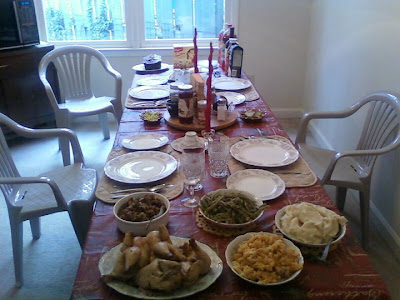 |
| Grid and layout of accessible parking spaces and access aisles |
Went to a meeting with Disability Rights and Resources today to listen to a conference call about Accessible Parking and the ADA.
First of all, I am happy it is called Accessible Parking now. Never liked Handicapped Parking. Many people who are not in wheelchairs also need to be closer to their destination when they travel. My children and I all have invisible disabilities that interfere with our endurance, especially in hot weather. Often, I see people look at me when I emerge from my car without getting a wheelchair. I often want to tell them, I may look good going in, but most times, I look very tired and stressed by the time I come out. But, I digress.
While the ADA is a wide-sweeping civil rights document, often it is
almost too broad and can be interpreted differently by each city, town
or locale. In fact, the speaker mentioned that an establishment does not
have a specific blueprint on how it lays out its parking spots.
Today's call covered how accessible parking relates to the Title II and III sections of the ADA. I am the first to admit that most of these calls leave me a little dry. While the ADA is a wide-sweeping civil rights document, often it is almost too broad and can be interpreted differently by each city, town or locale. In fact, the speaker mentioned that an establishment does not have a specific blueprint on how it lays out its parking spots.
 |
| Where's the front door? [Description: Accessible parking space next to woods] |
That would explain why some restaurants or convenience stores have the accessible spots so far away from the front door.
Other things I learned:
1. All religious entities are exempt. Even if they own a day-care center on or off the property they own. They do not have to comply to the ADA when it comes to parking. That was news to me and made me feel grateful for the churches I've attended where there was ample and easily identifiable accessible parking.
2. Under the Title 1 section of the ADA, the business must have at least 15 employees to come under the ADA. guidelines. And, for every four spots, one has to be accessible. But, the more important point for me is that many small businesses would be exempt from the ADA, but would probably benefit from hiring workers with disabilities. This made me think that as we network small businesses, there needs to be a discussion on how to make sure they are welcoming to employees with disabilities.
3. Valet parking (with the new 2010 standards) has to have accessible spaces. Yaaay! I mean, I don't get out all the time, but in my mind, I always want to be able to do anything anyone else wants to do and not become restricted based on my or my children's need for accessibility.
There were more items and I will post them when the entire presentation is uploaded (in about 2 weeks), but for now, I just want to touch upon some of the problems brought up by attendees.
One had to do with accessible parking being on a street where no parking was allowed after 11pm, while establishments in the neighborhood stayed open until 2am. This sounded like a bar/restaurant and so it immediately peaked my interest. Unfortunately, there was no perfect answer for the person asking. Since no one could park on the street after 11pm, it was not discriminatory, but someone using a wheelchair did not have safe access if they parked on another street. The ADA couldn't help anyone in that situation.
This is where I know if the establishment knew the problem, perhaps a safe accessible place could be created. I would approach the business and let them know they are losing some customers. In this case, ignorance costs.
Another problem was a parking space that was accessible to wheelchairs and scooters, but the meter for the space was not.
 |
| Solar powered parking meter- Good for the environment, but are they accessible? |
WTHeck! Who came up with that bright one!?! And, the guy got a ticket while trying to figure it out! Of course, I hope he was going to fight it. Before a judge that ticket could barely stand up. But, who designs these things? Why aren't they field-tested for everyone? Who makes a space accessible and forgets that someone using a wheelchair may have to deposit the fare?
At the end of the meeting, there wasn't much conversation, but I felt energized. Even as a user of accessible parking, I looked at the entire thing with new eyes. I am now looking out to see how to educate the community about the accessible parking. I am hoping to help others understand the nuances of these spaces.
Like the access space between cars. Do not park there! It is not a space. It is illegal and even the police need to understand that the car should be issued a ticket for illegal parking.
Now, let me know what accessible parking looks like where you live. Do you have problems using the spaces to dine out or work? Do you run into a lot of violators? Are there enough spaces or are they too far way from the front doors of the business or building?
Let me know how you protect our accessible parking.












